North Facing Garden Ideas: Brighten Up Shady Spaces
Creating a beautiful north-facing garden can seem challenging, but with the right ideas and plants, you can turn this shady spot into a stunning outdoor space. Whether you want to grow lush greenery, vibrant flowers, or a cozy relaxation area, there are plenty of options available to make your garden thrive.
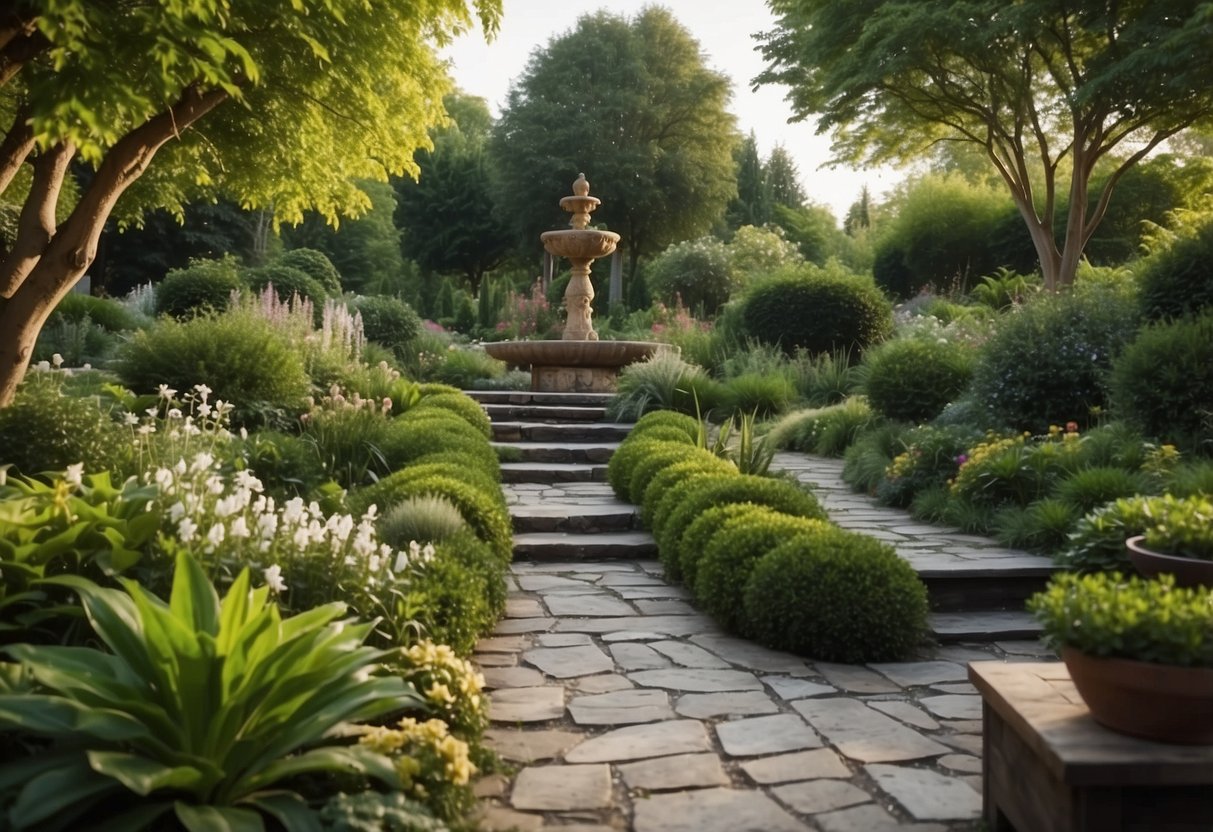
How can you make the most of the limited sunlight in a north-facing garden? By choosing the right plants, using effective design techniques, and incorporating elements like white flowers and reflective surfaces, you can create a luminous and inviting garden. Get ready to transform your outdoor space into a place you’ll love to spend time in, no matter the direction it faces.
1) Shade-loving Ferns
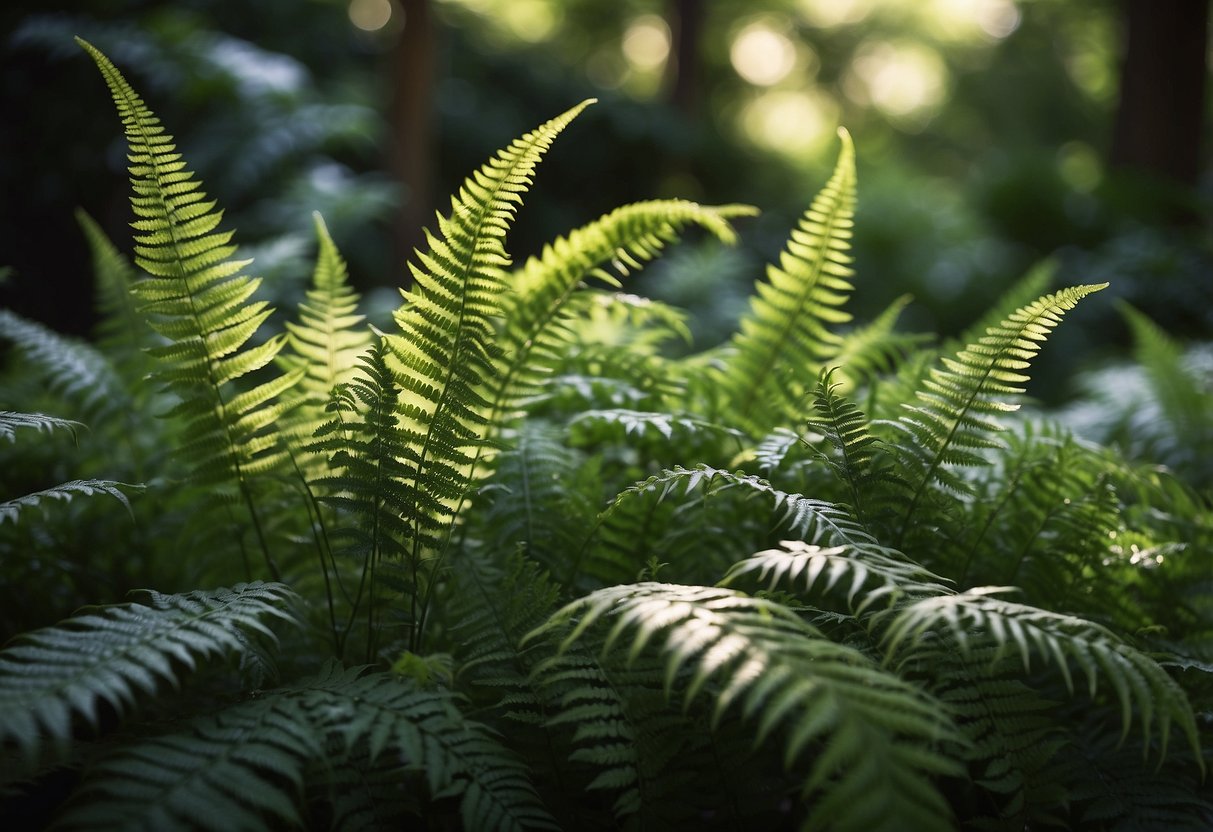
Ferns are perfect for your north-facing garden. Their lush, green fronds thrive in shady spots.
One great option is the Soft Shield Fern. It is evergreen and looks stunning as it unfurls in spring.
Another beautiful choice is a small fern with silver, green, and burgundy fronds that shimmer in the dappled light of your garden. They add a touch of elegance to your shady borders.
2) Hostas for Ground Cover
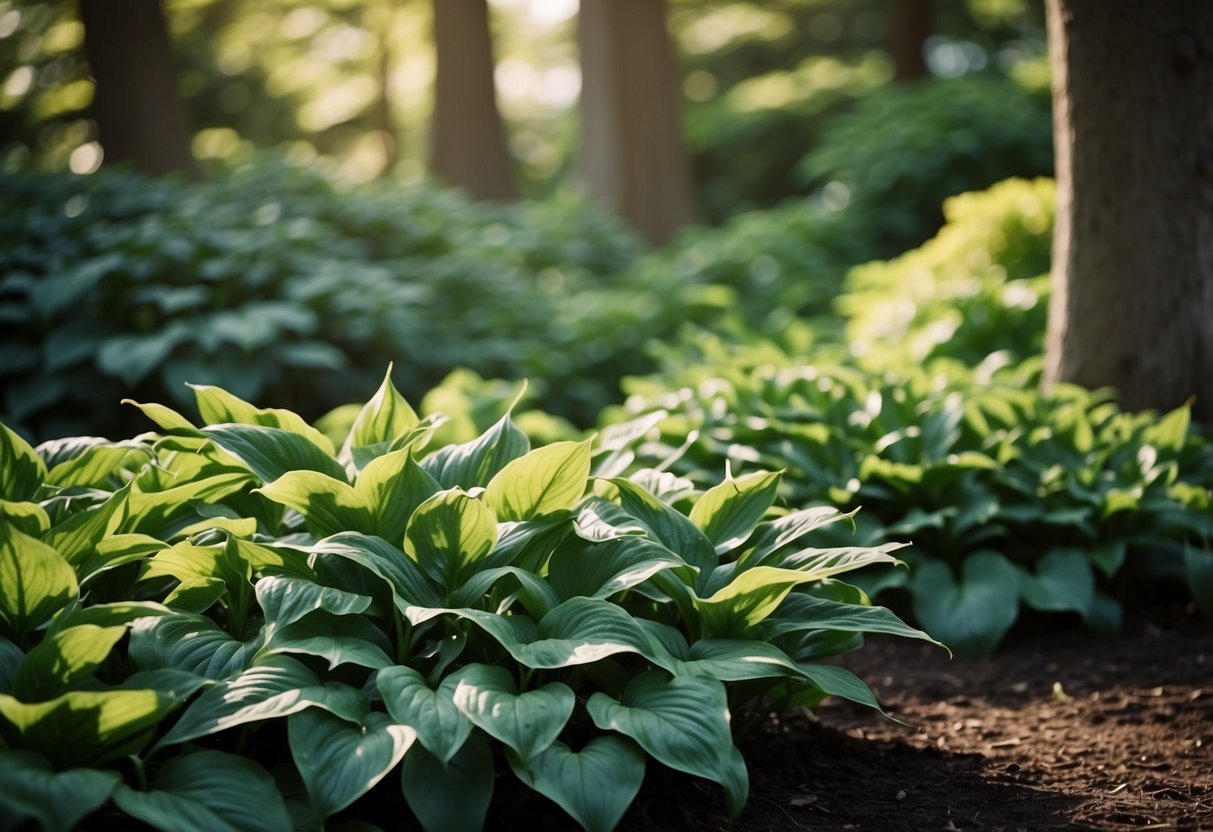
Hostas are a fantastic choice for ground cover in a north-facing garden. Their lush foliage and variety of leaf shapes and colors bring life to shady areas.
These plants come in many types, like the Hosta Patriot, which is shorter, and the larger Frances Williams.
You can mix and match different hostas to create a vibrant, low-maintenance carpet of green.
3) Climbing Hydrangea

Climbing Hydrangea is a wonderful choice for your north-facing garden. Its large, glossy leaves and clusters of fragrant white flowers bring beauty to shaded areas.
This plant can grow quite tall, reaching 30-50 feet. It thrives in full shade and needs moist, well-drained soil. Mulching with peat or compost helps retain moisture.
For more tips, check out this guide on DIY Gardening.
4) Bergenia for Color
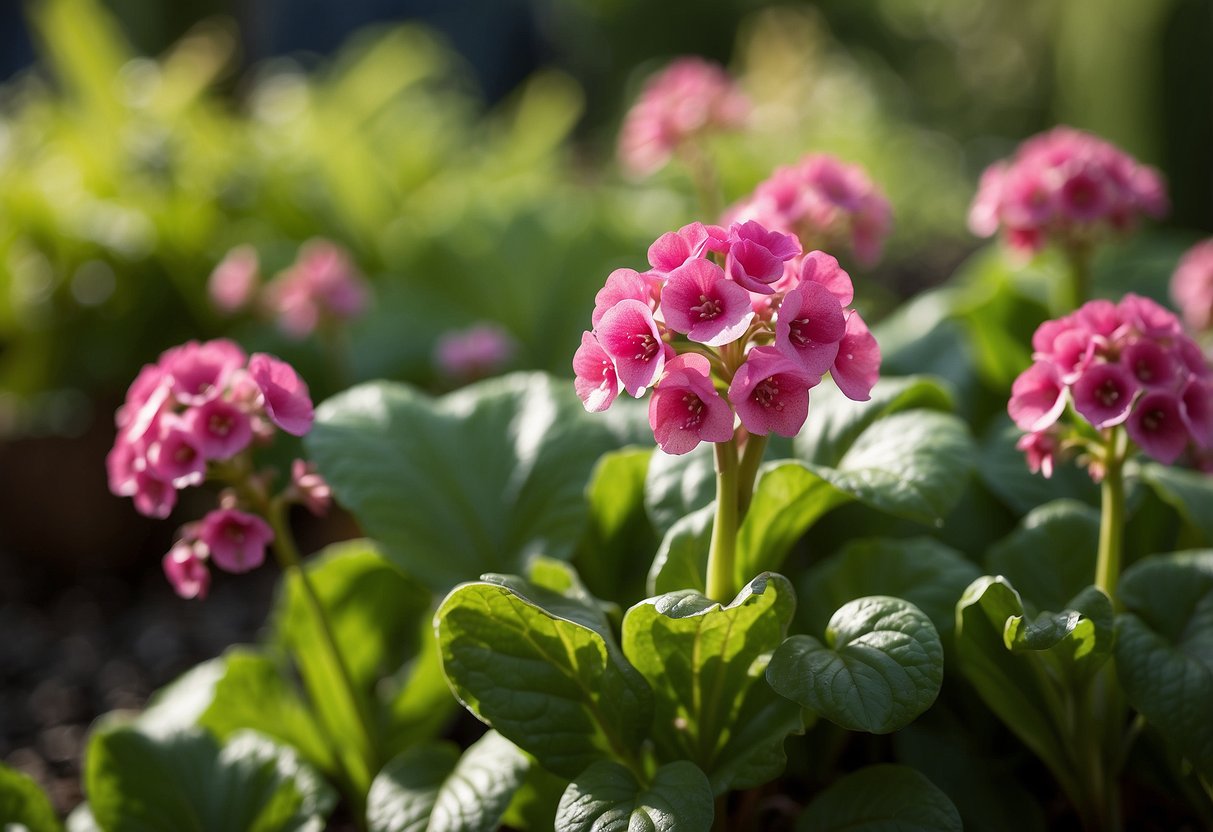
Bergenia is a great choice for adding color to your north-facing garden. Its large leaves turn bronze-red in fall and winter, providing year-round interest.
In spring, look forward to beautiful mauve-red flowers that brighten up shaded areas. Bergenia grows well in both shade and sun, making it versatile for your garden design.
Explore different types of bergenia to find varieties that suit your space and style. Plant them about 12 to 18 inches apart to allow for growth. This plant’s slow growth rate means it won’t crowd out other plants.
5) Astilbes for Flowers
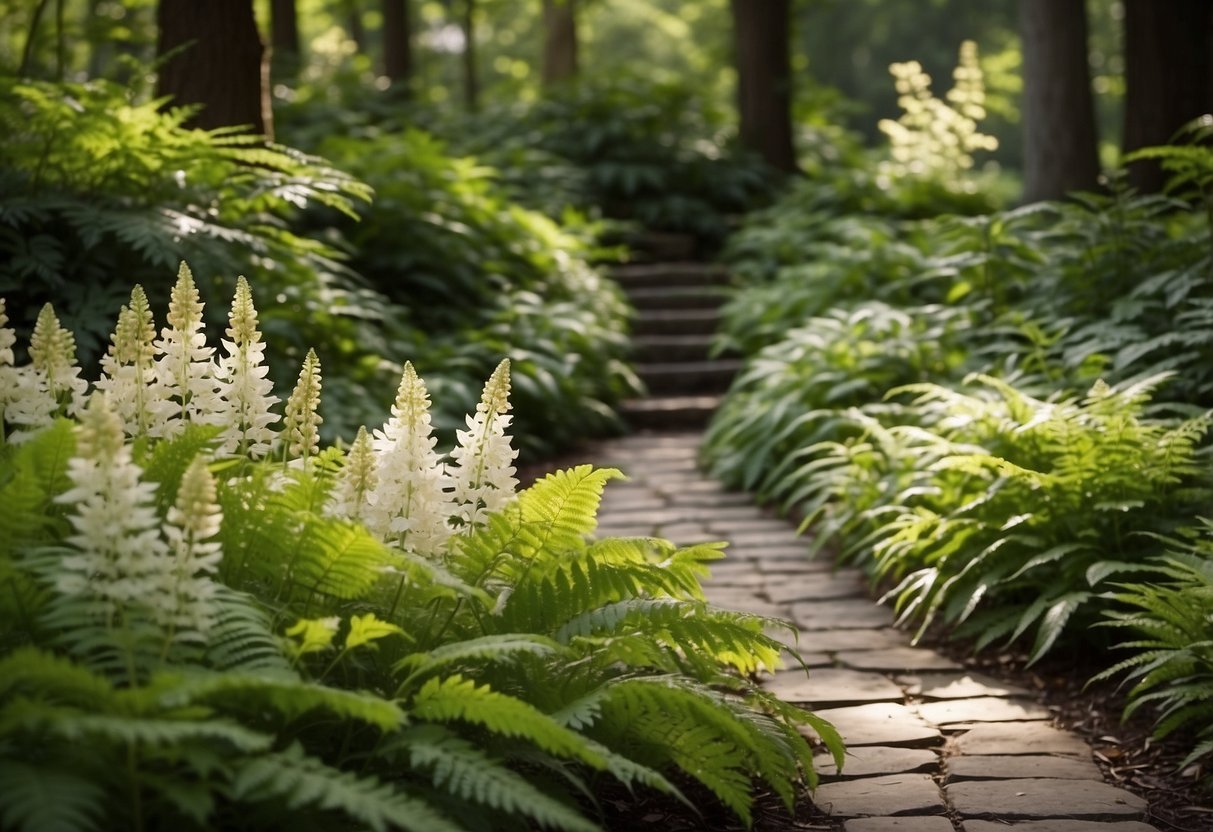
Astilbes are fantastic for adding color to your north-facing garden. They thrive in shady spots and produce beautiful, feathery blooms.
These flowers come in a variety of shades, including pink, red, and white. They also grow well alongside other shade-loving plants like ferns.
Astilbes prefer moist soil, so make sure to keep them well-watered. If you’re looking for a way to brighten up a shady spot, astilbes are a great choice.
6) Heuchera Varieties

Heucheras, also known as Coral Bells, are perfect for your north-facing garden. They thrive in partial shade and come in a variety of colors.
One great option is ‘Plum Royale’, which features shiny purple foliage and does well in different seasons.
Another favorite is ‘Electra’ with lime green leaves and red veins that add a pop of color.
Explore more Heuchera varieties to find the best fit for your garden. These plants can add beauty and depth to your shaded spaces.
7) Wintergreen Boxwoods

Wintergreen boxwoods are perfect for your north-facing garden. These shrubs are hardy and can thrive even with limited sunlight. They maintain their rich green color throughout the year.
You can use Wintergreen boxwoods to create a neat hedge or border. They grow slowly, making them easy to maintain with just occasional trimming. Their dense foliage provides excellent privacy. With their classic look, Wintergreen boxwoods add a touch of elegance to any garden. For attractive shrubs requiring minimal sunlight, check out Wintergreen Boxwoods.
8) Japanese Forest Grass

Japanese Forest Grass is perfect for a north-facing garden. It loves shady spots and adds a touch of tranquility to your garden.
Plant it in moist, well-draining soil to keep it healthy. This grass doesn’t handle drought well, so water it about three times a week.
For a beautiful ground cover, space the plants 18 to 24 inches apart. This gives them room to grow and spread out nicely.
Adding a layer of mulch around the base helps keep moisture in and weeds out. Plus, it looks great!
9) Skimmia Bushes

Skimmia bushes are perfect for your north-facing garden. They thrive in shady spots and bring year-round interest.
These evergreen shrubs have dense, dome-shaped foliage. In winter, they show off tightly closed flower buds.
Plant both male and female skimmia bushes to encourage berry production. You can find tips on growing these versatile plants here.
10) Ivies for Vertical Interest
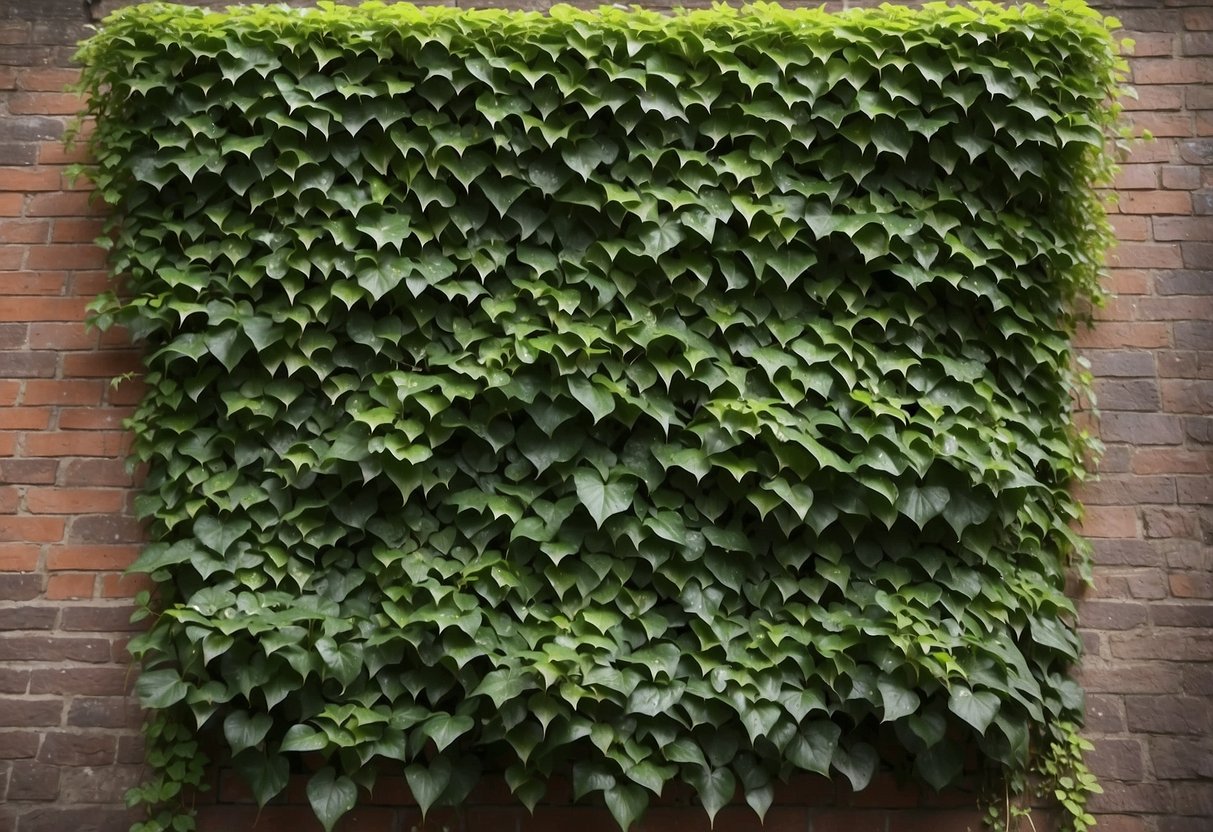
Adding ivies along walls or fences in your north-facing garden can create a lush, green backdrop. They thrive in shade and offer year-round greenery.
English ivy is a popular choice. Its dense growth covers walls quickly, making it perfect for vertical interest.
For a bit of color, check out variegated ivies. They have leaves with white edges, adding visual interest to your garden.
Understanding North Facing Gardens

North-facing gardens often have unique light and soil conditions. Key aspects include the patterns of sunlight and shade, along with the specific soil conditions that can influence plant growth.
Sunlight and Shade Patterns
In a north-facing garden, sunlight mostly hits the back of the garden. This is because of how the sun moves across the sky. The front of the garden, close to your house, will usually be shaded for most of the day.
The left side of the garden (east-facing) catches morning light. The right side of the garden (west-facing) gets evening light. During winter, the lower sun angle might mean that even the back of the garden gets less light. This makes it important to place shade-loving plants close to the house and sunlight seeking plants farther away.
Soil Conditions and Improvements
North-facing gardens often have cooler, moister soil. Because they get less direct sunlight, soils stay damp longer. Check your soil’s pH and nutrient levels regularly. You might need to improve drainage or add organic matter to boost fertility.
Plants like ferns and hostas thrive in shady, moist conditions. If the soil is too wet, consider raised beds or adding sand to improve drainage. Mulching can help keep the soil warm and retain moisture.
You can also use compost to enrich the soil. This supports better plant growth by adding essential nutrients. Regularly turning the soil helps air reach plant roots and prevents waterlogging.
Plant Selection for North Facing Gardens

Choosing the right plants can make a north-facing garden vibrant and alive. Focus on shade-loving plants and flowers that do well in low light.
Shade-Loving Plants
Shade-loving plants are perfect for north-facing gardens. These plants thrive without direct sunlight, making them ideal for your space.
Ferns – Ferns are an excellent choice with their intricate fronds adding texture and depth. They also require minimal care.
Hostas – Known for their lush foliage, hostas come in many shades of green. Their broad leaves create a lush, full look in the garden.
Heucheras – Heucheras, also called coral bells, offer colorful foliage ranging from deep purple to bright green. They are resilient and can tolerate varying conditions.
Moss – Moss can be used to cover shaded ground areas, creating a soft green carpet that retains moisture.
Astilbes – These plants produce feathery plumes of flowers and can add height and interest to shaded areas.
Flowers That Thrive in Low Light
Flowers that flourish in low light can brighten a north-facing garden. Picking varieties that don’t need full sun ensures continuous blooms.
Hydrangeas – These shrubs are famous for their large flower heads. They perform well in partial shade and add a charming touch with colors like blue, pink, and white.
Hellebores – Also known as Christmas roses, hellebores bloom in late winter or early spring. Their flowers come in various shades and remain vibrant in the shade.
Impatiens – These annuals are perfect for adding color. They come in many vibrant shades such as red, pink, and white.
Begonias – Begonias are another excellent choice. Their lush flowers and attractive foliage can brighten shady spots.
Lily of the Valley – This delicate, fragrant flower blooms in May, with beautiful bell-shaped blossoms that do well in low light.
By carefully selecting these plants, you can create a beautiful and thriving north-facing garden. For more information on specific plants like hydrangeas and their care, refer to specialized resources.
Design Tips for North Facing Gardens

Designing a north-facing garden involves creating interest with focal points and using techniques to maximize light. This approach can turn a shady area into a beautiful space.
Creating Focal Points
In a north-facing garden, you can create focal points to draw attention. Use bright, colorful furniture or pots to add vibrancy. A pizza oven can be an interesting feature that also provides functionality.
Adding a seating area at the back of the garden, where it will get the most sunlight, is a great idea. Consider placing sculptures or ornamental features to enhance visual appeal. Don’t forget to use a mix of evergreen and flowering plants to maintain interest throughout the year.
Maximizing Light Reflection
Reflecting light is key in a north-facing garden. You can achieve this by using mirrors, light-colored surfaces, and water features like ponds. These elements bounce light around and brighten the space.
Consider painting walls and fences in white or cream to reflect more sunlight. Adding multiple mini ponds can enhance light reflection and add a soothing element. Use shiny or glossy garden decor to further enhance the light.







